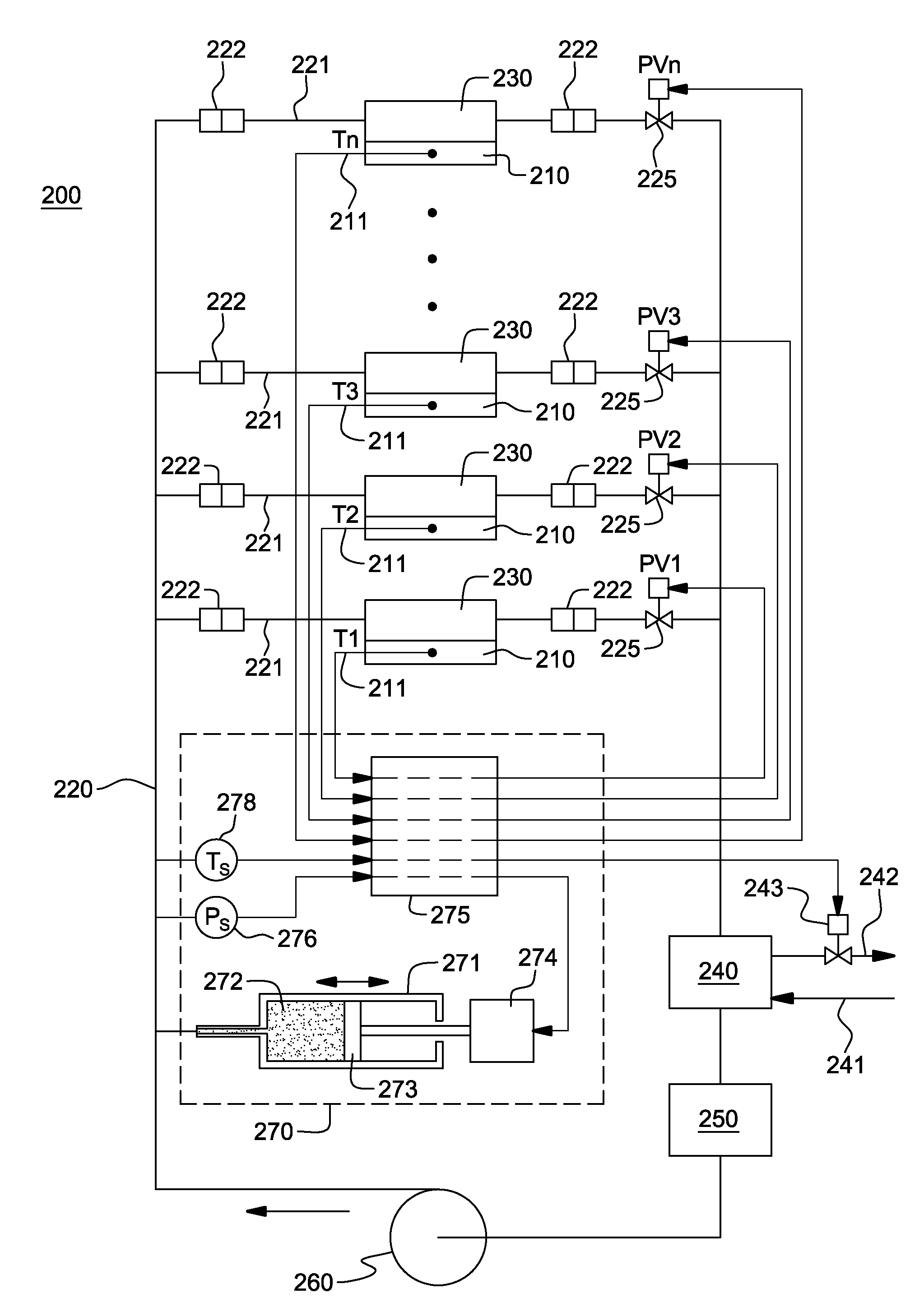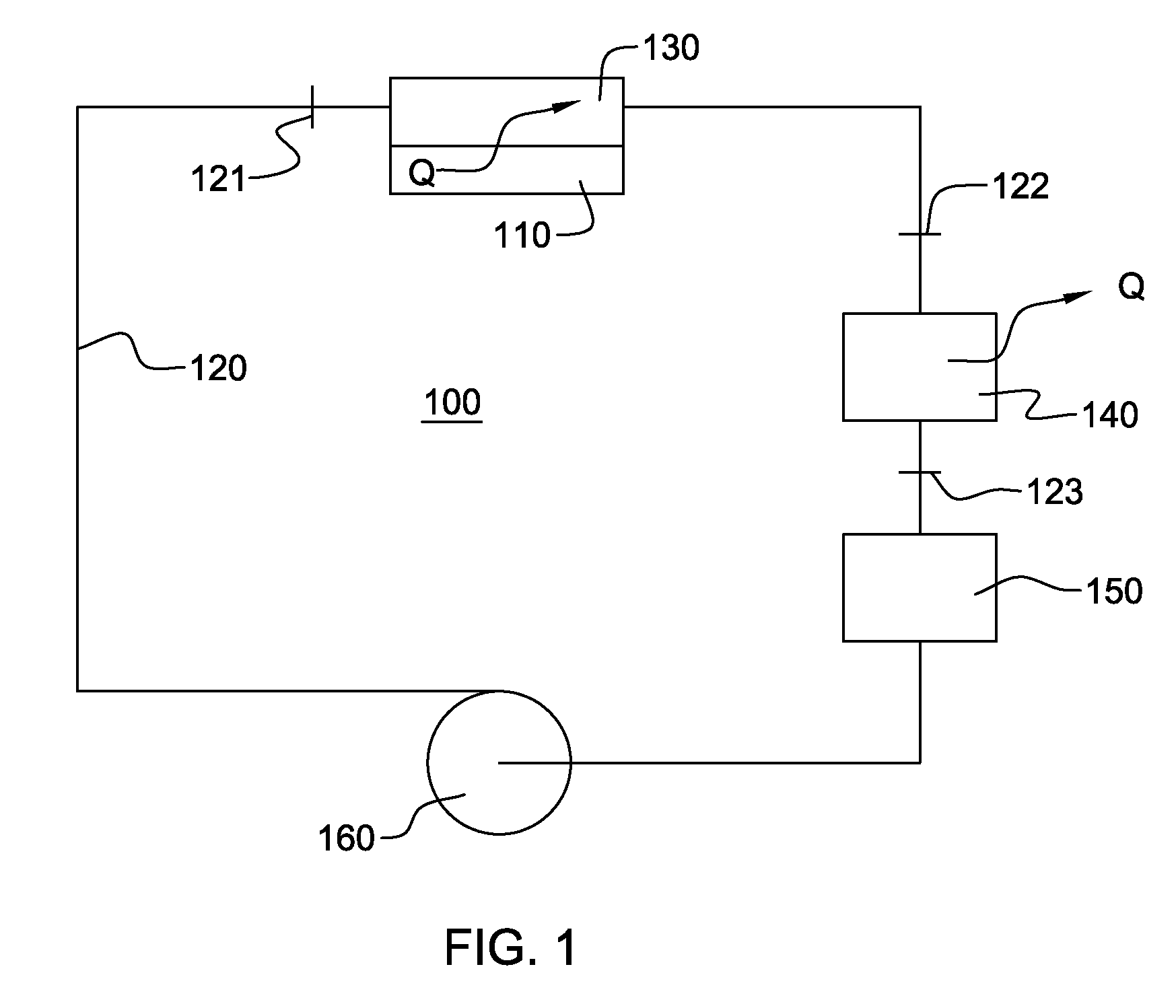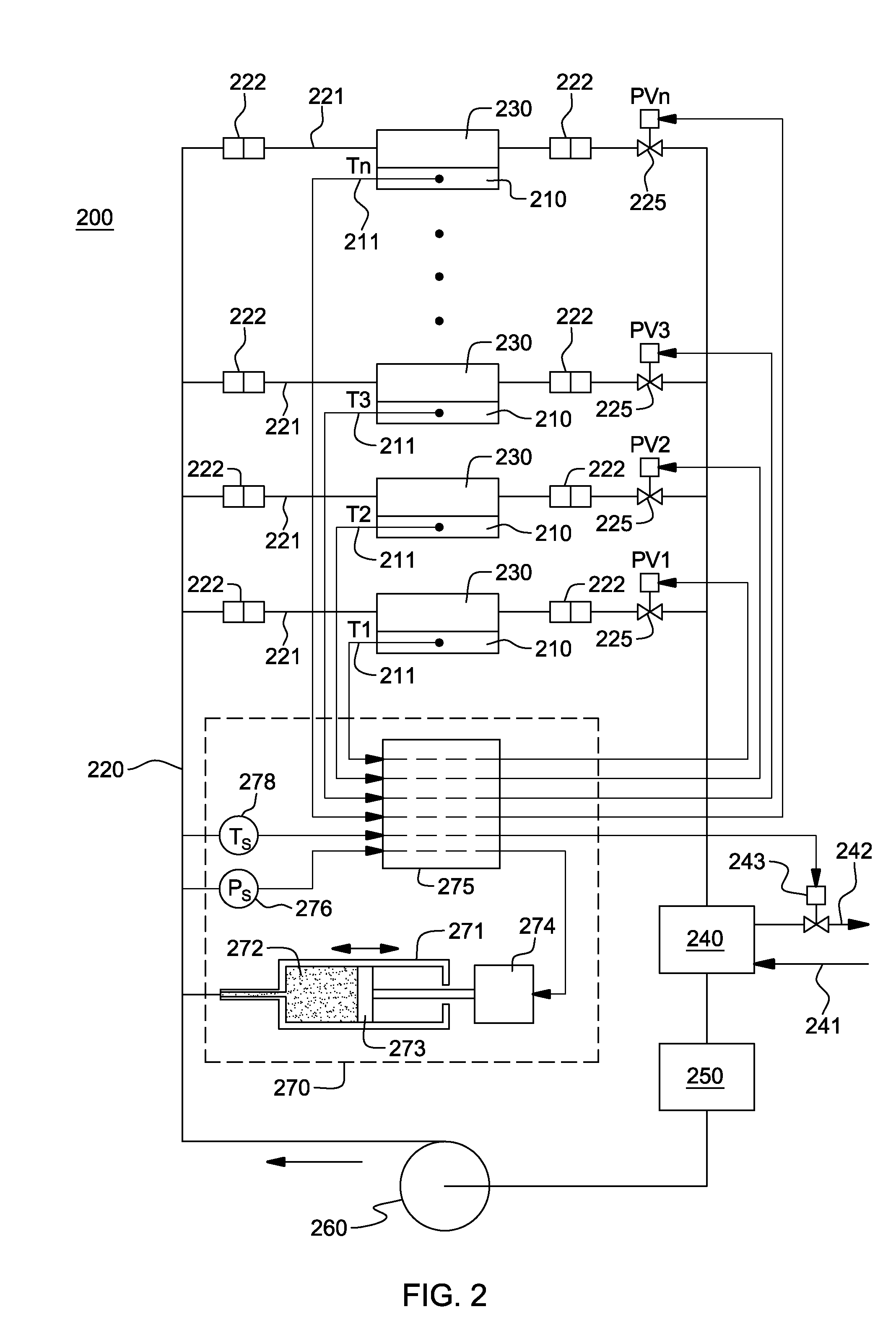Control of system coolant to facilitate two-phase heat transfer in a multi-evaporator cooling system
a cooling system and control system technology, applied in the field of heat transfer mechanisms, can solve the problems of increasing power consumption, increasing heat load and heat flux, and increasing device performance challenges, so as to reduce power consumption, increase the amount of heat and heat density (i.e., heat per unit volume) and increase computer performance.
- Summary
- Abstract
- Description
- Claims
- Application Information
AI Technical Summary
Benefits of technology
Problems solved by technology
Method used
Image
Examples
Embodiment Construction
[0019]As used herein, “electronic device” comprises one or more heat-generating electronic devices of a computer system or other electronic system requiring cooling. In one example, the electronic device is or includes an integrated circuit chip, a semiconductor chip and / or any other electronic device(s) requiring cooling, and may either be unpackaged or packaged in an electronic module. As one example, the electronic device may comprise part of an electronic system disposed, for example, in an electronics rack, such as a rack-mounted server system. A “liquid-to-air heat exchanger” means any heat exchange mechanism through which liquid coolant can circulate; and includes, one or more discrete heat exchange devices coupled either in series or in parallel. A heat exchange device may comprise, for example, one or more coolant flow paths, formed of thermally conductive fluid conduits (such as copper, brass or other tubing) in thermal contact with a plurality of air-cooled fins (formed o...
PUM
 Login to View More
Login to View More Abstract
Description
Claims
Application Information
 Login to View More
Login to View More - R&D
- Intellectual Property
- Life Sciences
- Materials
- Tech Scout
- Unparalleled Data Quality
- Higher Quality Content
- 60% Fewer Hallucinations
Browse by: Latest US Patents, China's latest patents, Technical Efficacy Thesaurus, Application Domain, Technology Topic, Popular Technical Reports.
© 2025 PatSnap. All rights reserved.Legal|Privacy policy|Modern Slavery Act Transparency Statement|Sitemap|About US| Contact US: help@patsnap.com



